Literary rating: ★★★★★
Kick-butt quotient: ☆☆☆☆½
 Liane Zane brings her Elioud Legacy trilogy to a rousing and powerful conclusion in this novel, which was actually my favorite of the three. (Full disclosure at the outset: Liane, who’s a Goodreads friend of mine, generously gifted me with a paperback ARC, because she knew I’d really liked the two earlier books. No promise of a good review was offered or requested; this book amply earned that on its merits.)
Liane Zane brings her Elioud Legacy trilogy to a rousing and powerful conclusion in this novel, which was actually my favorite of the three. (Full disclosure at the outset: Liane, who’s a Goodreads friend of mine, generously gifted me with a paperback ARC, because she knew I’d really liked the two earlier books. No promise of a good review was offered or requested; this book amply earned that on its merits.)
This is definitely a series that needs to be read in order. Our story here opens in medias res, and readers who begin here won’t have much knowledge of the premise or the situation –nor, especially, of the characters and their relationships. You really need the context of the first two books to fully appreciate this one. (With that context, though, it becomes a wonderful capstone to the arch the author has crafted!) However, for the benefit of readers who haven’t read either of those books nor my or others’ reviews of them, and who may not have seen the book description either, the titular “Elioud” are human-angel hybrids (matings between the two races having begun before the Flood, and some unions –or rapes of humans by fallen angels– supposedly continuing to occur). Depending on their degree of angelic inheritance, Elioud may have special abilities that most humans do not, and may be quite long-lived (as in, centuries) as well. Those who are aware of what they are may choose, like other humans, to knowingly serve God or Satan (or, also like many humans, to imagine that they can just ignore that whole conflict and be neutrals). But for those on one side or the other, the term “spiritual warfare” may be a lot more literal than it is for most believers.
Near the beginning of the series opener, the three heroines of the trilogy, a close-knit trio of cross-national friends in their early 20s, all of them both working for their respective countries’ intelligence services and involved on the side in a sub rosa vigilante operation of their own against sex traffickers and predators, met three long-lived Elioud warriors, who revealed to the ladies that they also have angel ancestry. Together, the six of them were involved in fighting the nefarious plots, continued across the first two books, of the fallen angel Asmodeus, who’s now set himself up as a cult leader for a sect of brain-washed humans who call themselves bogomili, after a medieval heretical sect (but who are a lot more malevolent and murderous than their earlier, peaceful namesakes). The other aspect of the series plot is that each member of these two trios felt a strong attraction to a member of the other one. It wasn’t hard to predict that each of the three novels would focus on one of these pairs, and that the course of their romance would be an important plot strand. So here, Beta Cerna and Andras Nagy take center stage.
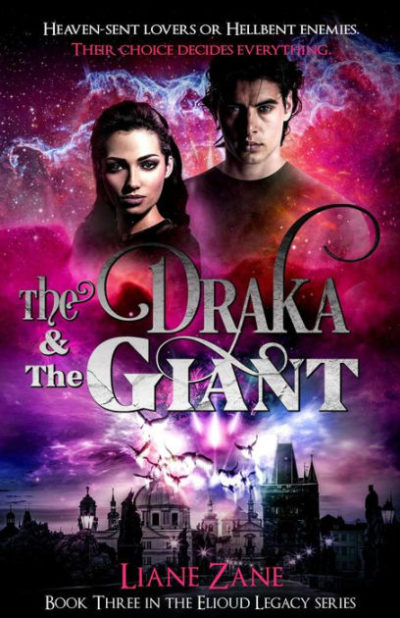 For me, in the previous books, these two characters had always seemed the least interesting and appealing, largely because I didn’t really know them. Indeed, Beta (short for Alzbeta –she’s Czech) is hard to get to know. She’s a “lone wolf” with very few friends, and a brusque manner that can come across as practically feral. And because Andras is big, strong and taciturn, and mostly inclined to obey orders, it’s easy to fall into the trap of subconsciously dismissing him as not very smart or sensitive (though that’s a great mistake!). But here they come into their own; we see them as the complex and special people they truly are. The previous book ended with Beta arousing a sleeping, half groggy Andras for an unexpected sexual encounter in his bed –and then vanishing before morning. When this book opens, none of the other five main characters have seen her for three years (so it’s now 2018). But we soon learn that there’s been more of a reason for her disappearance than her commitment issues. Much is going on, and Asmodeus (and his fellow demon Yeqon. whom we met in the second book) are exponentially ratcheting up their plans, which won’t bode well for humanity if they come to fruition. But the Archangel Michael (directed, of course, by God, though here He operates offstage) has plans too….
For me, in the previous books, these two characters had always seemed the least interesting and appealing, largely because I didn’t really know them. Indeed, Beta (short for Alzbeta –she’s Czech) is hard to get to know. She’s a “lone wolf” with very few friends, and a brusque manner that can come across as practically feral. And because Andras is big, strong and taciturn, and mostly inclined to obey orders, it’s easy to fall into the trap of subconsciously dismissing him as not very smart or sensitive (though that’s a great mistake!). But here they come into their own; we see them as the complex and special people they truly are. The previous book ended with Beta arousing a sleeping, half groggy Andras for an unexpected sexual encounter in his bed –and then vanishing before morning. When this book opens, none of the other five main characters have seen her for three years (so it’s now 2018). But we soon learn that there’s been more of a reason for her disappearance than her commitment issues. Much is going on, and Asmodeus (and his fellow demon Yeqon. whom we met in the second book) are exponentially ratcheting up their plans, which won’t bode well for humanity if they come to fruition. But the Archangel Michael (directed, of course, by God, though here He operates offstage) has plans too….
Many of the strengths of the preceding books are evident here also. Zane realizes the settings well (events take place in several European countries), and flavors the narrative with glimpses of the various customs, languages, folklore and cuisine of the nationalities represented. Her characters are round, vivid, dynamic, and distinct (every one of the six main characters have their own unique personalities, rather than being clones of the others, but the supporting characters are also clearly drawn). There’s a strong good vs. evil conflict (with a recognition that we wage this conflict in our own hearts, not just with other people), with high stakes and a lot of dramatic tension. Though this isn’t commercial “Christian fiction,” it’s fiction written by a Christian (the author is a practicing Roman Catholic) and the basic message is Christian. (As in much supernatural fiction, the angels vs. demons conflict is a metaphor for the spiritual conflicts of the real world.) My one quibble here is that our heroes and heroines don’t pray much in crisis situations (and they’re up to their eyeballs in the latter, which would do wonders for my prayer life!). But that’s a fairly minor point. It was also actually easier for me to achieve “suspension of disbelief” here than in the first two books, despite the continuing murky points of angelology/demonology, and the ramping up of Elioud powers here (the mating of two Elioud warriors enhances their abilities). Perhaps that’s because by now I’ve gotten more used to my Elioud friends and their fictional world. :-)
Bad language here is minimal. There are some references to lewd and disgusting sexual behavior (Asmodeus and Yeqon hang out in Amsterdam’s red-light district, and their sexual attitudes are what you’d expect from demons), and one instance of premarital, though not casual, sex; but Zane doesn’t emphasize the former any more than she has to, and the latter is explicit only up to a point. (Basically, the romantic content is quite wholesome, and a wedding –I’m not saying whose!– is one of the more moving scenes in the book.) This is definitely the most violent book of the series, though, with two major pitched battles and a body count through the roof, not all of the casualties being bad guys. However, fans of action thrillers won’t mind this, and fans who like their heroines tough will love Beta. (She’s a deadly accurate shot with both a pistol and a long gun, but her favorite weapons are her chain whip and her karambit, a hooked originally Indonesian knife modified as a switchblade, which she finds it soothing to flick open and closed when she’s nervous, the way some people tap their foot. :-) )
While this is, like the others in the trilogy, a thick, substantial novel, at 525 pages it doesn’t feel a bit overly long; I was immersed and interested immediately, and stayed so for every page. It’s also a highly evocative read emotionally, with some beautiful writing and imagery in places (and some very grim images as well). I’d enthusiastically recommend it to fans of supernatural fiction with Christian themes, of action thrillers or action heroines (or heroes), and of paranormal romance.
Author: Liane Zane
Publisher: Zephon Books; available through Amazon, both for Kindle and as a printed book.
A version of this review previously appeared on Goodreads.





 The main theme of this book appears to be, “How far will a mother go, to protect her daughter?” Based on what we read here, the answer to that question appears to be, “Very, very far.” The heroine is Sherica Daniels, who initially appears to have somewhat lucked out and escaped a nasty and abusive relationship. Her husband, drug addict Roy, has just died following a pair of botched armed robberies. That should leave her and teenage daughter Ashlynn to get on with their lives. Not so fast. For it’s only a short while before Roy’s drug dealer, Tokie, shows up. He’s demanding Sherica pays her husband’s debt – and more, because he believes she knows where the unrecovered loot from Roy’s robberies was hidden. When she fails to convince Tokie otherwise, he abducts Ashlynn.
The main theme of this book appears to be, “How far will a mother go, to protect her daughter?” Based on what we read here, the answer to that question appears to be, “Very, very far.” The heroine is Sherica Daniels, who initially appears to have somewhat lucked out and escaped a nasty and abusive relationship. Her husband, drug addict Roy, has just died following a pair of botched armed robberies. That should leave her and teenage daughter Ashlynn to get on with their lives. Not so fast. For it’s only a short while before Roy’s drug dealer, Tokie, shows up. He’s demanding Sherica pays her husband’s debt – and more, because he believes she knows where the unrecovered loot from Roy’s robberies was hidden. When she fails to convince Tokie otherwise, he abducts Ashlynn.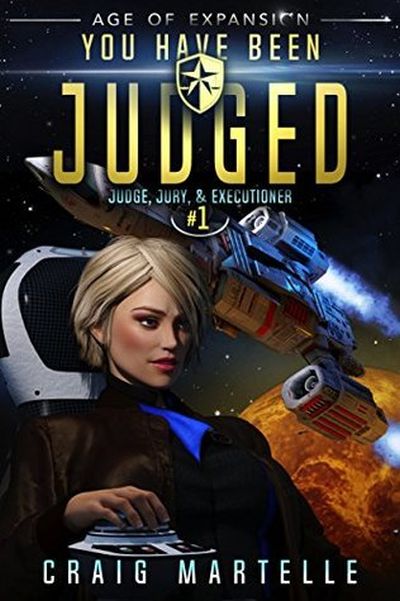 This is another entry in the sprawling Kurtherian Gambit universe, which must have well over a hundred books in it, by a slew of different authors. I’m gradually coming to a couple of conclusions: a) it’s a very loosely-tied series, and b) the quality varies. When you give your book a title like this, evoking the spirit of Judge Dredd, you are setting certain expectations. Unfortunately, this is a book which fails to meet them, with a heroine who never achieves the level of intensity necessary to live up to the series title: Judge, Jury, Executioner. It has reached 16 volumes, which suggests either there’s a market for it, or the author has too much time on their hands. No prizes for guessing my opinion.
This is another entry in the sprawling Kurtherian Gambit universe, which must have well over a hundred books in it, by a slew of different authors. I’m gradually coming to a couple of conclusions: a) it’s a very loosely-tied series, and b) the quality varies. When you give your book a title like this, evoking the spirit of Judge Dredd, you are setting certain expectations. Unfortunately, this is a book which fails to meet them, with a heroine who never achieves the level of intensity necessary to live up to the series title: Judge, Jury, Executioner. It has reached 16 volumes, which suggests either there’s a market for it, or the author has too much time on their hands. No prizes for guessing my opinion.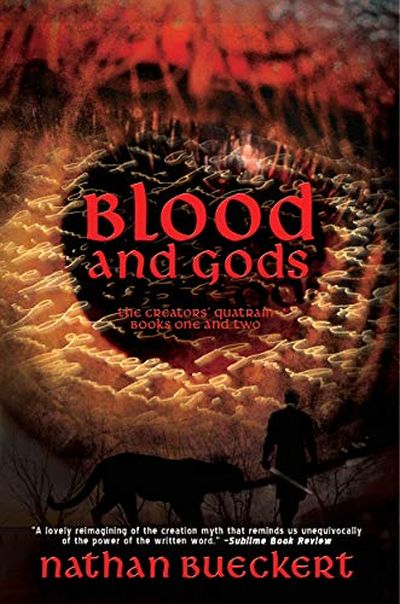 What I’ll remember about this one is the arc. Not so much of any character, more as to whether or not this would qualify for the site. The story began on solid enough ground, but around the end of the first volume (this omnibus contains parts 1+2), it plummeted well below the threshold needed. I almost gave up reading at that point, but persisted, and the book did rebound with an extended, gory finale in which the heroine and her ally took on what felt like an entire city. Okay, it’s back in. But I’m not happy about it, for reasons I’ll get to in a bit.
What I’ll remember about this one is the arc. Not so much of any character, more as to whether or not this would qualify for the site. The story began on solid enough ground, but around the end of the first volume (this omnibus contains parts 1+2), it plummeted well below the threshold needed. I almost gave up reading at that point, but persisted, and the book did rebound with an extended, gory finale in which the heroine and her ally took on what felt like an entire city. Okay, it’s back in. But I’m not happy about it, for reasons I’ll get to in a bit.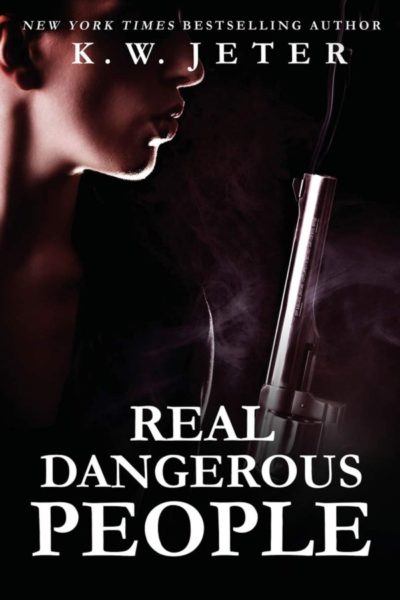 At Cole’s funeral, a meeting with Curt, an old acquaintance of his that he’d recommended her to, led to a three-month gig in “security” for one Mr. Falcone, another mobster like her former employer, who now prefers to be called Mr. Falcon since he’s looking to shed his Mafia image; also like the late Mr. McIntyre, he’s moving to position himself as more plausibly “legitimate.” (So “security” work for him involves dealing with his double-crossing employees, and attacks by thugs working for his equally shady rivals.) Near the beginning of this book, she’s invited to join his personal bodyguard team, where a sudden vacancy has opened up. But the way it opened up isn’t encouraging…. Since there are a couple of more books in the series, we know that our girl’s going to make it home at the end of the day. But she doesn’t have any such assurance, and the chances of this job ending with a tag on her toe look pretty real. She needs the money, though, since failing to provide for Donnie isn’t an option she’ll accept; and she’s about to face another unexpected existential threat to her little family unit, from a totally different quarter.
At Cole’s funeral, a meeting with Curt, an old acquaintance of his that he’d recommended her to, led to a three-month gig in “security” for one Mr. Falcone, another mobster like her former employer, who now prefers to be called Mr. Falcon since he’s looking to shed his Mafia image; also like the late Mr. McIntyre, he’s moving to position himself as more plausibly “legitimate.” (So “security” work for him involves dealing with his double-crossing employees, and attacks by thugs working for his equally shady rivals.) Near the beginning of this book, she’s invited to join his personal bodyguard team, where a sudden vacancy has opened up. But the way it opened up isn’t encouraging…. Since there are a couple of more books in the series, we know that our girl’s going to make it home at the end of the day. But she doesn’t have any such assurance, and the chances of this job ending with a tag on her toe look pretty real. She needs the money, though, since failing to provide for Donnie isn’t an option she’ll accept; and she’s about to face another unexpected existential threat to her little family unit, from a totally different quarter. A woman wakes up in a bedroom, with no knowledge of where she is, how she got there, or even who she is. Gradually, she (and the reader) find out the answers to at least some of those questions. Her name is Diya, and the bedroom is on Luna, which has now been settled and colonised by humanity. That’s the simple part. The rest? It’s complex. But is summary, she is a cyborg, created as part of a black budget research project by the NeuroDyne Corporation (Earth’s biggest employer – they basically own Iceland). An employee who had moral qualms about the scheme, smuggled Diya off-planet, stashing her with his blind sister Terry and a robot caregiver. But NeuroDyne aren’t letting their investment just walk away.
A woman wakes up in a bedroom, with no knowledge of where she is, how she got there, or even who she is. Gradually, she (and the reader) find out the answers to at least some of those questions. Her name is Diya, and the bedroom is on Luna, which has now been settled and colonised by humanity. That’s the simple part. The rest? It’s complex. But is summary, she is a cyborg, created as part of a black budget research project by the NeuroDyne Corporation (Earth’s biggest employer – they basically own Iceland). An employee who had moral qualms about the scheme, smuggled Diya off-planet, stashing her with his blind sister Terry and a robot caregiver. But NeuroDyne aren’t letting their investment just walk away.  I have always been intrigued by alternate histories. These are bits of speculative fiction, which are based on a “What if…?” premise. For example, what if Napoleon had won the Battle of Waterloo? Or what if John F. Kennedy’s assassination had failed? Creators speculate on the way the world might have changed, in ways big and small. I find such creations endlessly fascinating, giving me a strong suspicion that, at certain points, history teeters on a razor’s edge, where a seemingly insignificant event can have an impact far beyond its scale. Here, it’s a single person who changes the course of history. For what might have happened, had Joan of Arc turned up, not in medieval France, but in Russia, during the aftermath of the 1917 revolution?
I have always been intrigued by alternate histories. These are bits of speculative fiction, which are based on a “What if…?” premise. For example, what if Napoleon had won the Battle of Waterloo? Or what if John F. Kennedy’s assassination had failed? Creators speculate on the way the world might have changed, in ways big and small. I find such creations endlessly fascinating, giving me a strong suspicion that, at certain points, history teeters on a razor’s edge, where a seemingly insignificant event can have an impact far beyond its scale. Here, it’s a single person who changes the course of history. For what might have happened, had Joan of Arc turned up, not in medieval France, but in Russia, during the aftermath of the 1917 revolution? 30 years old, Willa sees herself as an “old maid.” She’s the eldest of three half-sisters, daughters of peripatetic ne’er-do-well Finn Malone, who outlived two wives (and was deserted by a third) in the course of his wanderings, which in 1889 led him to a homestead in the small community of Sweet Clover. Like many of the townsfolk, he was heavily in debt to conniving banker Theodore Pierce, and used his land as collateral. But he’s now recently dead, murdered after he took off on his latest quest for gold. At the moment, the farm isn’t productive; without him, the sisters won’t be able to repay the loan, and they’ll lose their home within months.
30 years old, Willa sees herself as an “old maid.” She’s the eldest of three half-sisters, daughters of peripatetic ne’er-do-well Finn Malone, who outlived two wives (and was deserted by a third) in the course of his wanderings, which in 1889 led him to a homestead in the small community of Sweet Clover. Like many of the townsfolk, he was heavily in debt to conniving banker Theodore Pierce, and used his land as collateral. But he’s now recently dead, murdered after he took off on his latest quest for gold. At the moment, the farm isn’t productive; without him, the sisters won’t be able to repay the loan, and they’ll lose their home within months.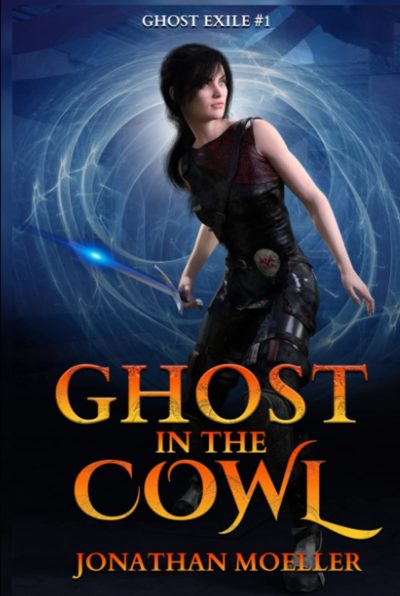 This one was probably teetering on the edge of a seal of approval, except one aspect. For what’s supposed to be book one in a series, the author spends a lot of time discussing events prior to the book getting under way, such as the tragic loss of the heroine’s true love. However, subsequent research revealed that this is not the start of Caina Amalas’s history. The Ghost Exile series is actually a sub-set of her saga, which appears to consist of no less than 26 primary works. According to
This one was probably teetering on the edge of a seal of approval, except one aspect. For what’s supposed to be book one in a series, the author spends a lot of time discussing events prior to the book getting under way, such as the tragic loss of the heroine’s true love. However, subsequent research revealed that this is not the start of Caina Amalas’s history. The Ghost Exile series is actually a sub-set of her saga, which appears to consist of no less than 26 primary works. According to  Cathy East Dubowski is a professional writer, who apparently specializes in both YA and grown-up movie novelizations. This is apparently her best-known one (and my only exposure to her work). To her credit, she attempted a fresher approach here than simply re-telling the screenplay in third person. The movie used the frame device of the couple’s visits to a marriage counselor. Here, the author begins the book with the counselor’s notes and transcripts from his initial sessions with the Smiths, both together and separately; the main body of the story is their alternating journal posts which the counselor asked them to write, without necessarily showing the text to anyone else. IMO, this works well; we get inside both their heads, and understand them and their feelings. (One reviewer complained that the technique makes for “repetition,” but I didn’t find this to be a problem. While they’re often describing the same events, their different perceptions of them are very revealing, and as such anything but boring.)
Cathy East Dubowski is a professional writer, who apparently specializes in both YA and grown-up movie novelizations. This is apparently her best-known one (and my only exposure to her work). To her credit, she attempted a fresher approach here than simply re-telling the screenplay in third person. The movie used the frame device of the couple’s visits to a marriage counselor. Here, the author begins the book with the counselor’s notes and transcripts from his initial sessions with the Smiths, both together and separately; the main body of the story is their alternating journal posts which the counselor asked them to write, without necessarily showing the text to anyone else. IMO, this works well; we get inside both their heads, and understand them and their feelings. (One reviewer complained that the technique makes for “repetition,” but I didn’t find this to be a problem. While they’re often describing the same events, their different perceptions of them are very revealing, and as such anything but boring.)